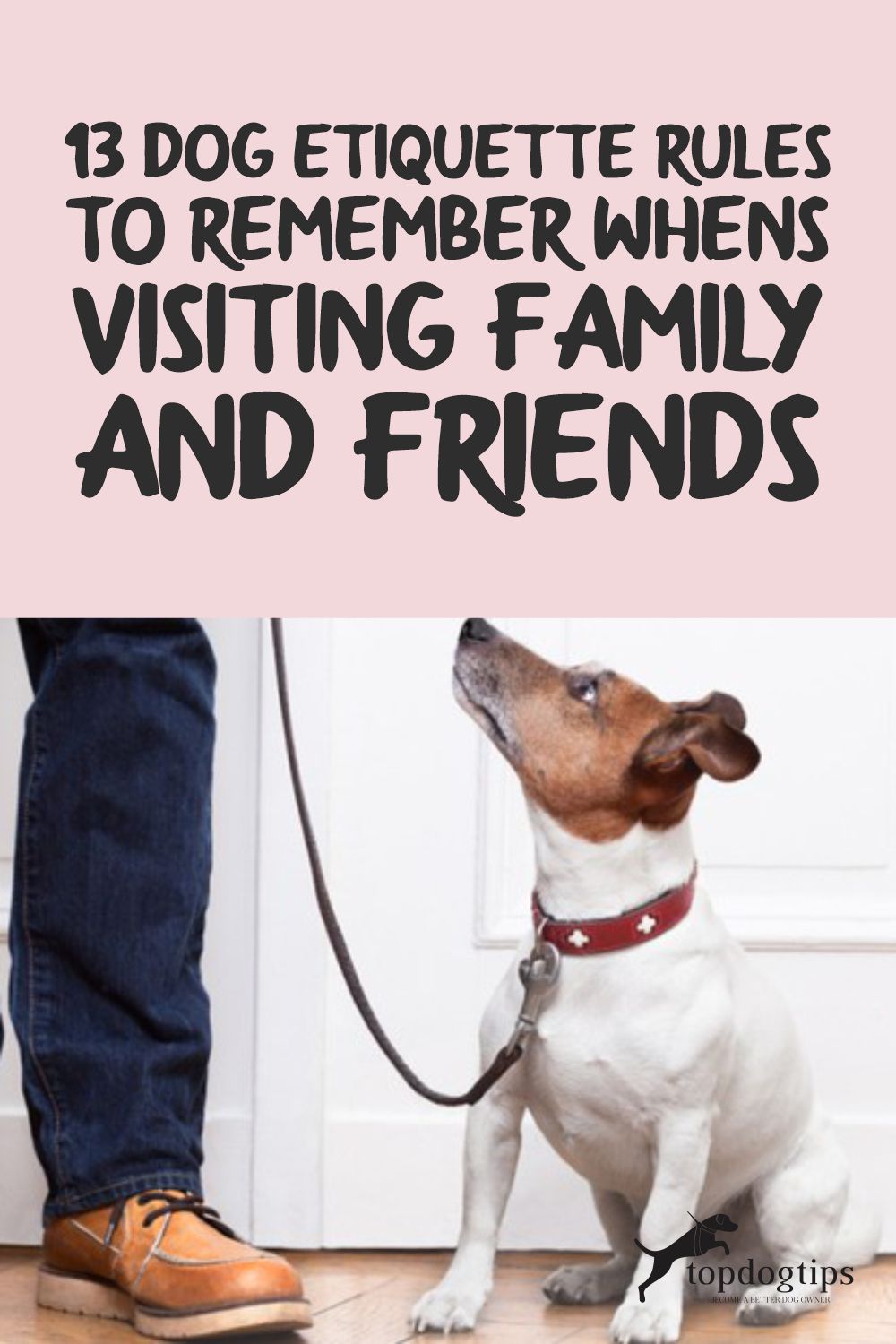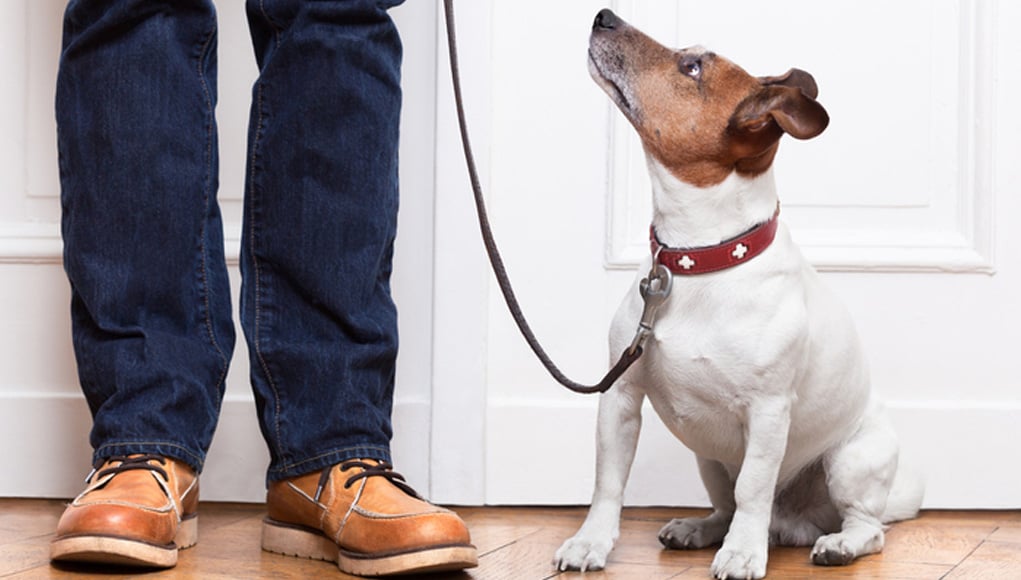Are you having second thoughts about bringing your fido with you on your family vacation, considering the dog etiquette rules?
We don't want our pet to be a pain in other's necks and end up ruining the supposedly festive reunion.
We will discuss:
- 13 dog etiquettes to keep in mind when visiting family and friends
- Tips on how to establish a good impression on those who don't love canines
So, get ready for an insight-filled discussion.
Without further ado, we're spilling the first etiquette you have to remember.
Table of Contents
- Dog Etiquette #1. Ask permission to bring him along
- Dog Etiquette #2. Prepare his basic needs
- Dog Etiquette #3. Teach him some obedience skills
- Dog Etiquette #4. Stop him from barking
- Dog Etiquette #5. Know the house rules and limits
- Dog Etiquette #6. Control the introductions
- Dog Etiquette #7. Keep your fido secure
- Dog Etiquette #8. Make sure your pup socializes with others well
- Dog Etiquette #9. Organize your road trips and play dates
- Canine Etiquette #10. Make sure your canine is clean and pest-free
- Dog Etiquette #11. Clean up after your pup
- Canine Etiquette #12. Make a plan for the sleeping arrangement
- Canine Etiquette #13. Expect the unexpected
- Bonus Tip: Show your gratitude with a thank-you note
- Conclusion
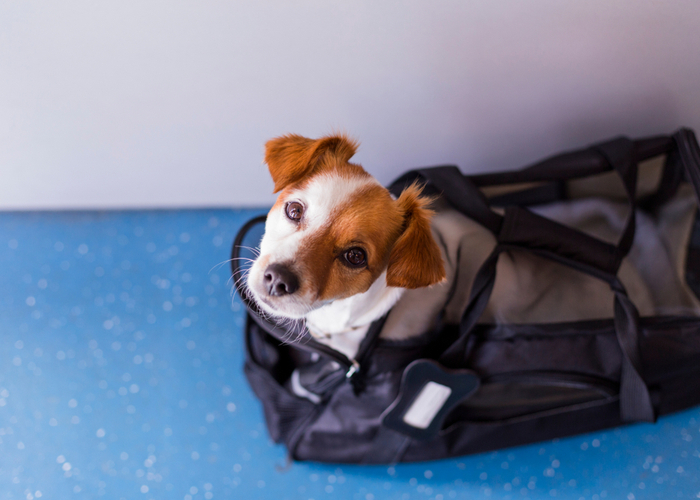
Dog Etiquette #1. Ask permission to bring him along
Even if the host you're visiting is a dog lover, you can't just assume that your fido is welcome.
And even if your pet was welcome in the past, the holiday or festivity can be hectic and stressful.
So, to avoid causing a burden to your family or friend, giving a warning or asking for permission is essential.
Just talk to the host and ask them if it's okay to bring a furry friend.
This way, they can prepare their home and secure their fragile vases to keep them away from the dog's wagging tails.
It'd also help if you'd ask if someone in the family is allergic to dogs.
If there's one, it may not be a good idea to bring your pet with you.
Additionally, asking them if certain rooms or parts of their home are off-limits to pups is also essential.
Bringing your dog gate will help if you have to enclose your fido in specific areas.
Remember that bad experiences with your dog in someone else’s home can cause strain in relationships.
So, to avoid mishaps and to show respect, ask for the owner's permission first.
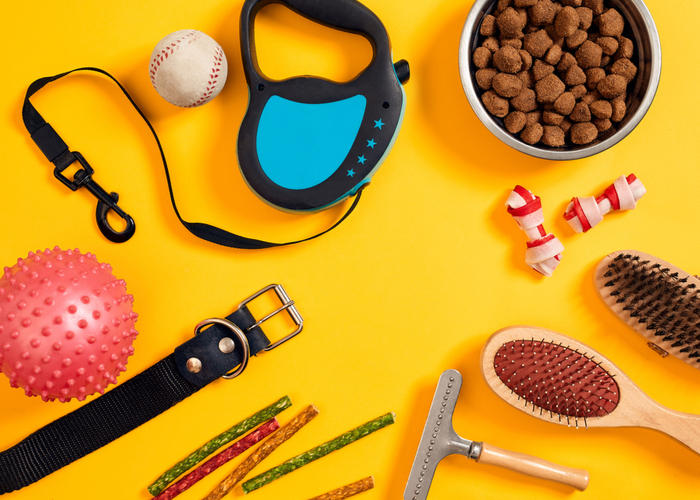
Dog Etiquette #2. Prepare his basic needs
You can't expect the host to pay for your fido's favorite food or cereal, so make sure to prepare his needs before the visit.
Being prepared for every scenario that comes to mind will help you have a less stressful visit.
When they are in unexpected settings, many pets become apprehensive.
Make life simpler for everyone by taking care of the essentials and bringing along some of your pet's favorite extras.
The following list will offer you some ideas on what you should bring with you:
- Dog food
- Can Opener
- Dog Treats
- Toys
- Leash
- Carrier
- Bedding
- Latex gloves
- Medications
- Vet's phone number
- Trash bags
- Muzzle
- Handheld vacuum
- Carpet deodorizer
- Proof of vaccinations
- Recent photographs
- Grooming items such as brushes, nail trimmers, and shampoo
- Litter, sand, or shavings
- First aid kit with hydrogen peroxide, gauze, bandages, etc
You know your fido better, so you have to prepare how he will react to unfamiliar places and situations.
He may get an upset stomach, get constipated, become moody, anxious, and aggressive in reaction to the unknown.
So, it would help if you'd get everything ready in case he acts that way.
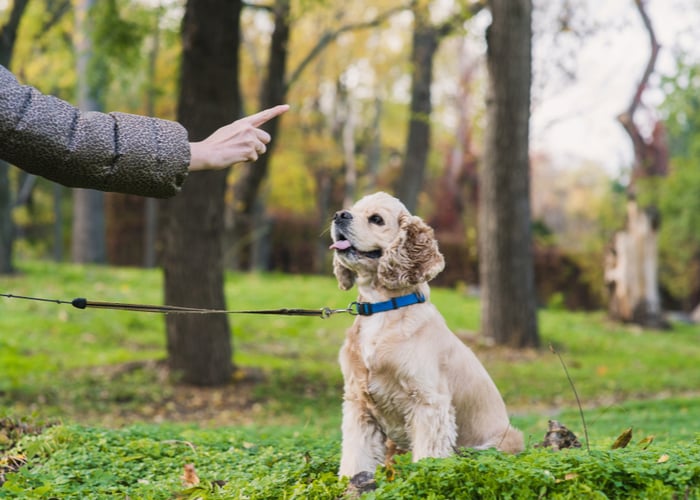
Dog Etiquette #3. Teach him some obedience skills
Training your dog can help establish a good impression and increases the chance of you both being invited back.
There are many basic skills for canine citizens, but here are the most common and easy ones.
Basic obedience skills for dogs:
“Sit”
This command is the easiest to teach, and it is frequently the first command introduced to a dog or puppy.
This command also aids in the dog's learning of how to respond to instruction.
Consider using ways that are both humane and beneficial.
Treats are used in most good programs to motivate and reward dogs for responding to commands correctly.
Make sure the treat you choose is free of additives.
“Stay”
In a puppy training session, your fido will probably learn how to sit and down for a few minutes.
But with repetition, your dog can learn to stay for up to a half-hour or more.
When you need your dog to stay put while you answer the door or settle down to wrap holiday gifts, the “stay” command comes in useful.
“Down”
Down is another helpful command, especially for huge dogs.
You can take your dog to the park or a sidewalk café once they have mastered the down posture.
A comfortable dog in public poses no threat to other people or pets, allowing you to relax and read a good book or meet up with friends.
“Come”
This command is critical for every dog (and its owner) to learn since it can save a dog's life.
Even if you are diligent, your dog will eventually slip out of its leash or escape through the front entrance or side gate.
However, this command can protect your pet from traffic, neighbors, and confrontations with other canines.
“Off”
The “off” command is different from “down” because it tells dogs that leaping on people or climbing on the furniture is inappropriate.
This command is crucial for teaching fidos how to greet people calmly and with all four feet on the ground.
“Heel”
If your fido drags you down the street, it can be a nuisance.
Even the most enthusiastic dog should learn to walk or jog at the same pace as you.
And this command can help him adjust to your pace.
“Don't touch.”
Wherever curious dogs go, they'll always find objects that pique their interest.
However, that thing might be a health hazard or breakable or not meant for play or enjoyment.
That's where the “don't touch” or “leave it” command comes in handy.
Show-off skills
Having a few tricks up your sleeve may also impress your family and friends and make you a better guest.
Here are simple show-off skills that can enhance your pup's charm:
“Roll-over”
This command is an easy and enjoyable trick to teach your dog.
Before you begin teaching this skill, make sure your dog understands the “down” command.
Instruct your dog to lay down in front of you in the “down” position.
- Kneel beside your dog and place a small, tasty goodie near their nose on the side of their head.
- Lure them to roll flat on their side by moving your hand from their nose to their shoulder.
- Try it a few times, and each time they follow the reward and lie down on their side, placing their head on the floor, commend and treat them.
- Once they're lying down, continue moving your hand from their shoulder to their backbone while holding a treat.
- They should roll onto their backs because of it.
- Keep on moving hand with the treat so they'll roll onto the other side.
- Add the verbal command “Roll Over” if they are consistently following the goodie all the way around in a “rollover.”
- Reduce the hand motion and the treat lure gradually until your dog can complete the trick with only a verbal command.
- And lastly, don't forget to praise and thank your dog for his efforts.
“High five”
Begin by putting your dog in a sitting position so that it can lift its paw effortlessly.
1. Holding the treat at nose level
Make a tight fist with a reward in your hand. Please wait for your dog to become impatient and paw at your hand while holding it at nose level.
When they do, acknowledge it with a click or a “Yes!” and give them a treat with your other hand.
Repeat it five times.
2. Introducing the high five command
Make a tight fist again with a reward in your hand and hold it at nose level.
Say “High Five!” before your dog lifts their paw.
Mark it with a click or a “Yes!” when they elevate their paw and touch your hand, then reward them with your other hand.
Repeat this five times.
3. Working on the actual high five
Next, we'll work on restructuring your hand into a real “high five” position.
Hold your flat hand up to your fido, placing your palm in front of the dog’s nose, even if you don't have a reward in your hand.
When they touch your palm with their paw, say “High Five!” and then click/”Yes!” Reward and repeat the process.
Your dog might have a hard time at this point if they don't realize that the game still functions the same way when your hand is flat, open, and empty.
So, before repeating step three, try implementing the steps below.
- Make an empty fist in front of your fido, then say “High five!” and click or say “Yes” and give the reward.
- Hold your hand the way you're holding a baseball and say, “High five!”. Then follow it with a click or “Yes!” and hand him the reward.
You may add more advanced skills to your dog’s vocabulary if you wish. That’ll surely make your family and friends entertained and charmed.
Dog Etiquette #4. Stop him from barking
Perhaps barking is one of the most common hosts’ concerns since it can annoy and disturb other guests.
Therefore, if you have an extra-sensitive dog who quickly responds to any triggers by barking, you'll need to do some training.
One way to train your dog to stop barking is by keeping him busy and distracted with toys.
Another clever idea that can save you from embarrassment is by making him exhausted through exercise.
That way, the dog will run out of energy, and as the saying goes, “A tired dog is a good dog.”
Teaching him that he'd get treats once he stops barking after hearing the cue “enough” can also make you two a better guest.
If your dog is a compulsive barker, you may need professional assistance to help correct his behavioral issue.
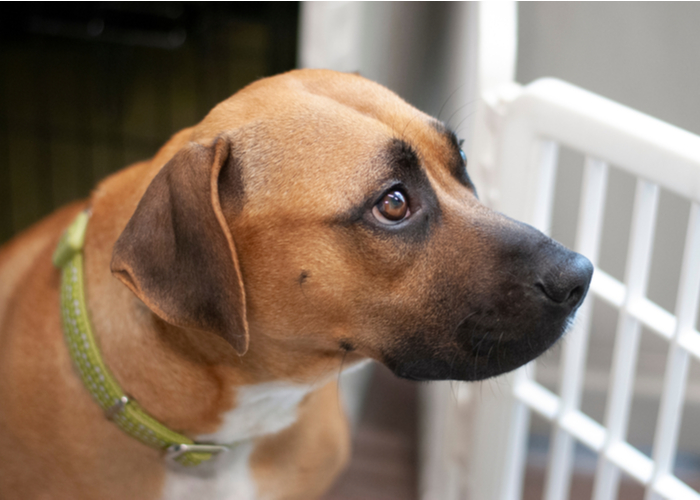
Dog Etiquette #5. Know the house rules and limits
Do you share your bed and furniture with your dog at home?
Well, don't expect that the host will be as enthusiastic as you in allowing cats and dogs on the furniture.
House rules may vary from one another, so you have to know what the rules are to ensure a peaceful and harmonious get-together.
It would help if you didn't wait until your pet makes a mistake. You have to ask.
Even if they're also dog owners, they may have a different approach to their pets.
For example, some owners use different can openers for dog food and human food.
No matter where you are, you have to keep your respect and do as they wish.
You may ask the following questions before making any assumptions:
- Will there be any off-limits portions of the house?
- What will your pet eat, and where will it consume it?
- Is it permissible to use it on the furniture?
- Will it be okay for your pet to interact with other pets and children in the house?
- Is it permissible in the yard?
- Where is it going to sleep?
Everyone will be happier if the rules are made clear from the start.
For your part, be open about potential issues, such as your pet whining if you leave it alone overnight.
With this new knowledge, it may be sent to the garage or even given free rein in the guest room so it can stay with you and keep the noise to a minimum.
If you're honest, you'll save your host from a restless night and potential mishaps.
Accidents on the carpet, gnawing, and territoriality near food are all examples of this.
With the facts in hand, you can collaborate to build a plan that works for everyone.
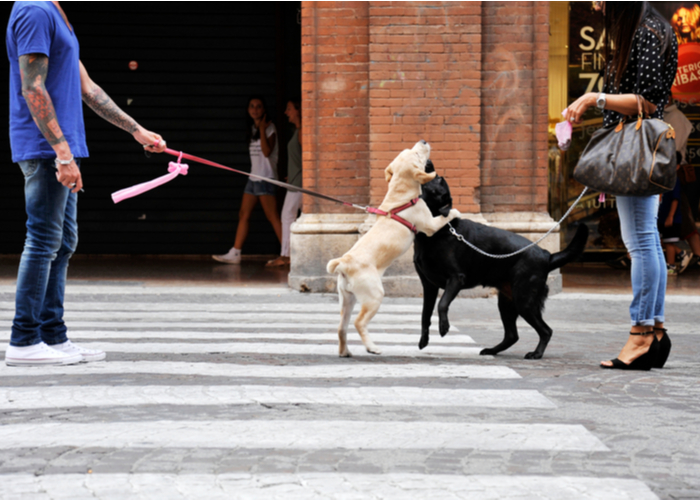
Dog Etiquette #6. Control the introductions
It takes time for your pet to adjust to a new environment.
So, let him get used to the new sounds and smells in the area.
If he's already relaxed, you can now introduce him to the family or friends you're visiting and their pets.
Many animals are territorial, and your fido will most likely feel threatened.
But if the environment is quiet and you'll be more soothing and reassuring with your pet, he can get used to it faster.
Your pet’s safety and other’s is the most crucial factor.
Therefore never let your pet out of its carrier and hope everything works out by itself.
It would help if you had assistance from your family and friends during the transition phase.
One essential tip when transitioning is to introduce your pet to a controlled environment.
You may have to restrain him by introducing him to other pets and removing any breakables from its room.
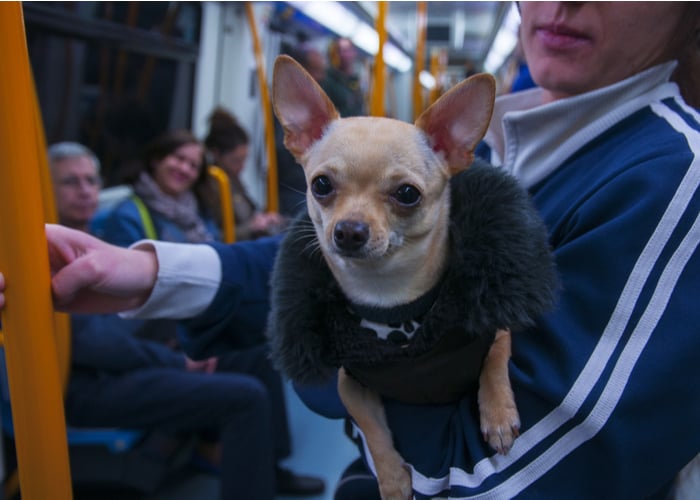
Dog Etiquette #7. Keep your fido secure
When traveling to your family or friend's home, you need to be aware of the requirements and restrictions in public transport.
There may be additional health hazards where you're going, such as Lyme disease, heartworms, or predators such as giant birds.
The best way to deal with any of these potential issues is to be aware so that you can take precautions.
Some of your habits as a dog owner, like keeping the doors, gates, and windows closed to keep your pet from running away, may not be familiar with the host.
So, it would help if you shared your concerns about your pet's safety with them to help them better understand some of these issues.
If your pet does escape unattended, you can locate him more quickly if it's wearing identification tags.
Having a recent photo of him can also help. That's why we recommended keeping one earlier.
It’s your responsibility to ensure your pet’s safety.
So, you have to evaluate the hazards in the place you're staying, like pest traps and poisonous plants.
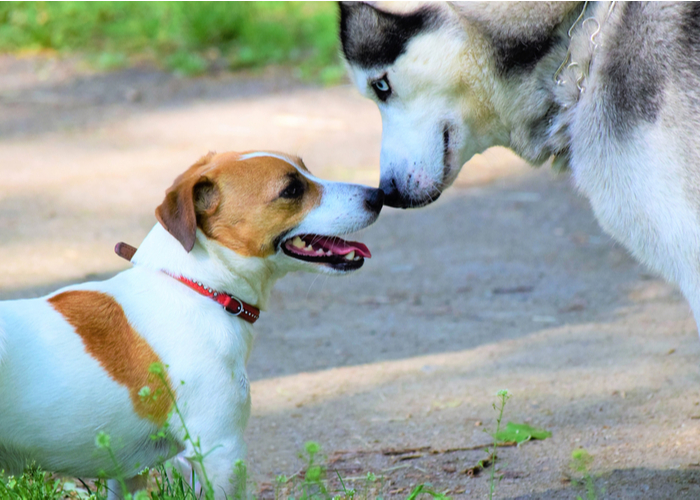
Your pet will have a better experience visiting a multi-pet family if it gets along with other pets.
However, just because he's friendly doesn't mean that your host's pet will warmly welcome him.
When visiting, be cautious of all animal interactions, especially if the animals are of different sizes.
Your pet may respond in unforeseen ways in new environments and situations.
It can entail hiding beneath the furniture at times or growling and nipping at other times.
This might trigger changes in pet behavior by introducing new animals or people, loud noises, or food competition.
So, you have to look out for your dog.
Otherwise, you need to put him in a separate room or carrier until you're sure that it won't endanger children, other animals, or other's property.
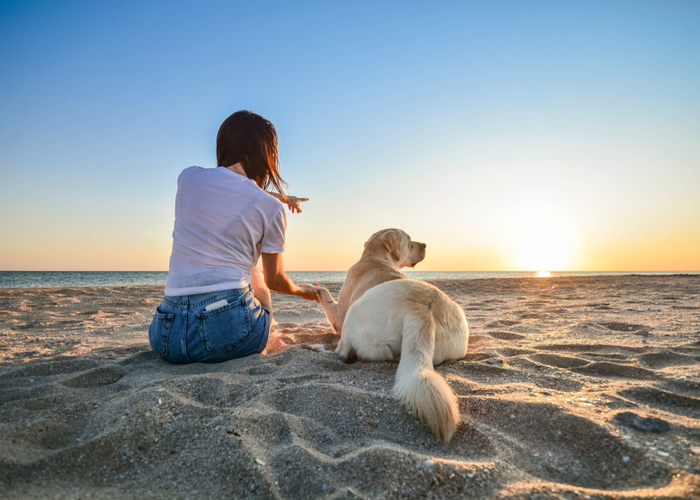
Dog Etiquette #9. Organize your road trips and play dates
When you visit your family and friends, you may want to see beautiful sights like parks with your dog.
If you do, remember that you need to be cautious and respectful of the rights of others.
It would help if you'd put him on a leash and look out for potential hazards on the road.
Remember to check for any pet restrictions if you're taking public transport and be cautious if you're taking your car.
Dogs who are not used to travels can become irritated.
You should avoid leaving your pet at all costs since it can make him prone to dognapping.
He may also suffer from extreme heat or cold if you'd leave him inside your car.
When interacting with strange animals or people, you have to exercise caution.
Your laid-back canine may feel distressed or violent after a walk through a park full of strange smells and sounds and an overnight stay in an unfamiliar place.
Keep your eyes on your dog and oversee any touching or playing activities.
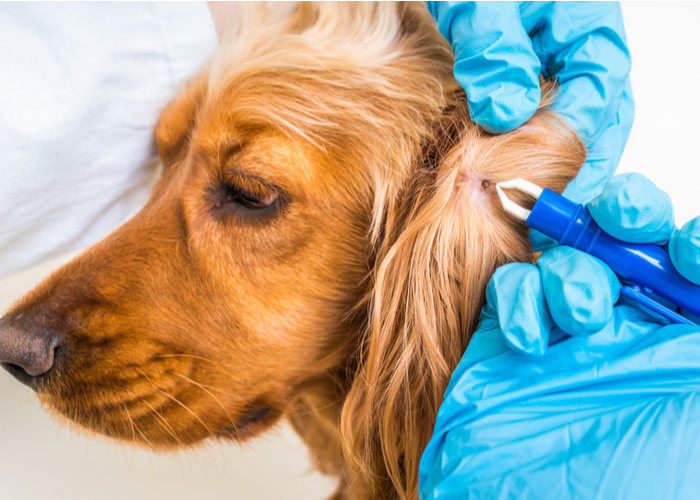
Canine Etiquette #10. Make sure your canine is clean and pest-free
A filthy, stinky dog that sheds all over the house is a major turn-off for others.
So, before your visit, make sure your dog is properly groomed.
Be prepared to wipe their paws clean before entering the house.
If it's his shedding season, or if your dog's a heavy shedder all year, inform your host ahead of time.
Having fleas and ticks is worse than having a dirty fido because it can hop from one dog to another.
Moreover, ticks bite and carry zoonotic diseases transferrable to humans, including Lyme, ehrlichiosis, and Rocky Mountain spotted fever.
Good thing there are lots of flea-control home remedies and products out there, so you can quickly get rid of them.
However, ticks are hard to remove because it takes 24 hours before the tick-prevention products and home remedies can kill a tick.
So, to avoid transferring it to other pets, keep your fido away from tick-infested areas for at least 24 hours before your visit.
On top of that, check for ticks thoroughly before you arrive.
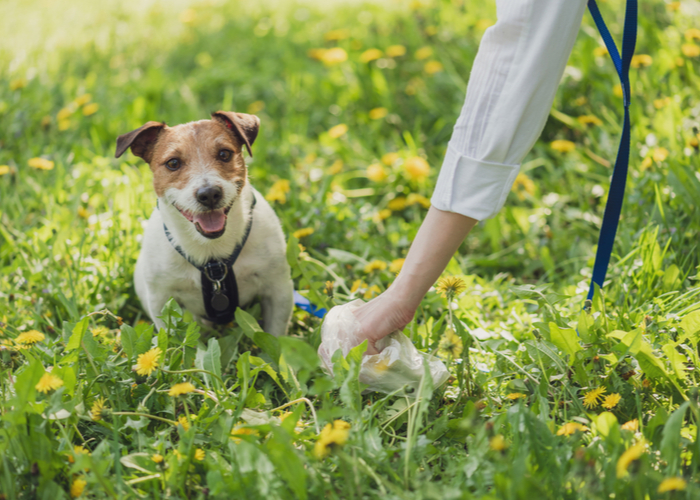
Dog Etiquette #11. Clean up after your pup
Whatever type of pet you bring with you, there will undoubtedly be a mess.
Regularly clean up shedding hair, flying feathers, dribbled kitty litter, cedar or pine shavings, and spilled pet food.
If possible, bring a handheld vacuum cleaner with you and keep it handy.
People who have never had pets before may be sensitive to odors that pet owners take for granted.
Therefore, it's crucial to pick up pet feces as soon as possible. It's more sanitary than waiting and eliminates odor issues.
Make sure you don't insult anyone when you come to visit.
Make it a practice to clean up after yourself if you hope to be invited back. It also applies to wastes in the yard.
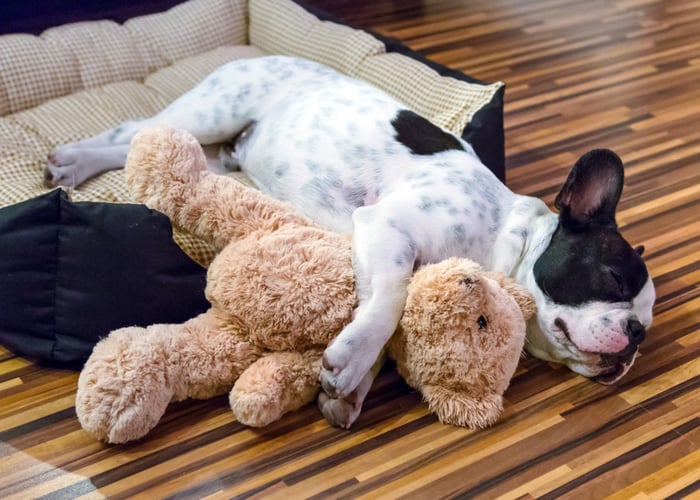
Canine Etiquette #12. Make a plan for the sleeping arrangement
Does your fido love to sleep with you in your home?
Then, you may need to make some adjustments when you're in a new place.
If you are keeping him at the garage, you're not likely to sleep in there.
But, you can ask your family or friends if you can sleep with them in a guestroom.
If it's not possible, the other option is to cover them with blankets and prevent them from whining.
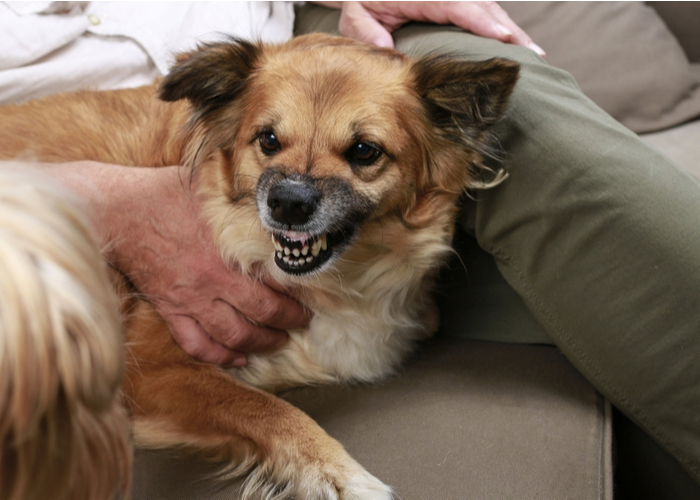
Canine Etiquette #13. Expect the unexpected
When visiting with pets, you have to stay observant for any signs of frustration and aggression.
It includes growling and lip curling. It would help if you also looked out for it when it plays with kids.
Your pet also needs attention so it won't feel neglected or abandoned, so spend some time with him even if you're not at home.

Bonus Tip: Show your gratitude with a thank-you note
No matter how things turn out, don't forget to send a thank-you card to your hosts, whether it's your family or friend.
You may send it with beautiful flowers to express your heartfelt gratitude for their hospitality.
If your fido did something wrong, it’s also a good opportunity to apologize.
Conclusion
Whether you're a guest at other homes or others are visiting you, it's your responsibility to keep your dog well-behaved around kids and other people.
Doing so can make your fido become an excellent canine ambassador that'll charm the heart of those who aren't fond of them.
Keeping those dog etiquette in mind can make the host feel relieved and the festivity less stressful.
READ NEXT: 12 Etiquette Rules for Dog Parks
